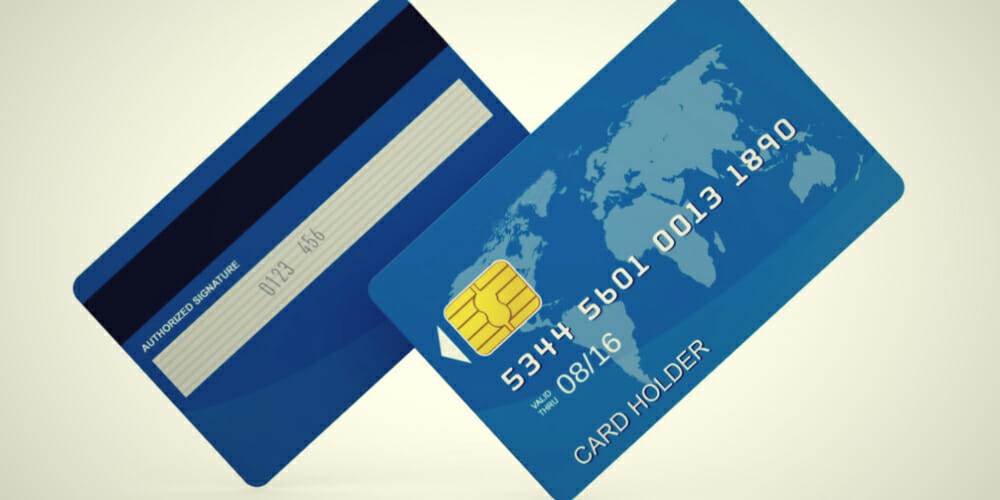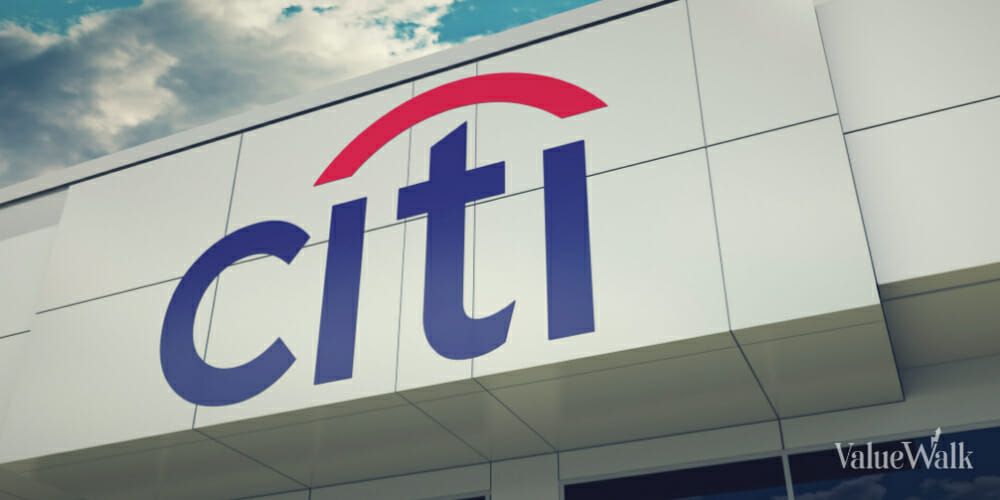If you’re new to debit cards, you may wonder what is name on card in debit card is? Is it your legal name? Your nickname? Or something else entirely?
The name on your credit or debit card is the primary account holder’s name. This is the name used when the card is issued. And it remains on the card even if it is transferred to another person. The name on the card in the debit card helps to identify the account holder and can be helpful if there are any disputes about the account.
So today, we’re going to talk about the name of a debit card and why it’s there. You will also learn about some common questions people have about debit cards, like how to use them and what are its benefits. Stay tuned to learn more!
What is a Debit Card?
A debit card is a plastic card that gives the cardholder a set amount of funds against each purchase. The funds are deducted from the account balance, and the same amount increases the available credit limit. Debit cards are used for both online and offline transactions. Here is some vital information about debit cards that you need to know.
How Does a Debit Card Work?
A debit card is linked to the cardholder’s bank account and can be used to make purchases or withdraw cash. When the card is used to make a purchase, the funds are deducted from the account balance, and the same amount increases the available credit limit. When the card is used to withdraw cash, the funds are deducted from the account balance, but the credit limit is not increased.
What Are The Benefits of a Debit Card?
There are many benefits of using a debit card, including:
- Convenience: Debit cards are accepted at millions of locations worldwide, making them a convenient way to access your funds.
- Safety: Debit cards are a safe and secure way to make purchases or withdraw cash. They are also much less likely to be lost or stolen than cash.
- Rewards: Many debit cards offer rewards programs that give you points for every purchase. You can redeem these points for cash back, merchandise, or travel.
What Are The Disadvantages of a Debit Card?
There are also some disadvantages of using a debit card, including:
- Fees: Some banks charge fees for using a debit card, such as annual fees, transaction fees, or ATM fees.
- Security: Debit cards are not as secure as credit cards because they are linked to your bank account. Someone could access your account and withdraw all of your funds if your card is lost or stolen.
- Limits: Debit cards have spending limits that can be lower than credit cards. This can be a problem if you need to make a large purchase or withdraw a large amount of cash.
Debit Card Vs. Credit Card
A lot of people confuse debit cards and credit cards. Debit and credit cards are the two most common plastic payment cards. Both have pros and cons, so it’s essential to understand the difference between them before deciding which one is right for you.
Debit Cards
Debit cards are linked directly to your checking account, so when you use a debit card to make a purchase, the funds are immediately transferred from your account to the merchant. This can be good if you’re trying to stay within a budget because you can’t spend more than what you have in your account. However, it can also be a downside if you have unexpected expenses or need to float a purchase until payday.
Credit Cards
On the other hand, credit cards are not linked directly to your checking account. When you use a credit card to make a purchase, you’re essentially borrowing money from credit card issuers and will need to pay that money back with interest.
This can be helpful if you need to make a large purchase or want to take advantage of rewards programs offered by some credit card companies. However, it can also be a downside if you don’t pay your balance in full each month because you’ll accrue interest charges.
Which One Is Better?
So, which is a better option for you? Debit cards or credit cards? It depends on your circumstances and financial goals. A debit card may be better if you’re trying to stay out of debt and within a budget. However, a credit card may be the better option if you’re looking to earn rewards or take advantage of special financing offers.
Front Part of a Debit Card
When you receive your debit card, the front will have your name, the card issuer’s logo, and the card number. The expiration date and CVV (card verification value) are usually on the back. But some cards may have the CVV printed on the front. Here is what you will see on the front of a debit card.
Bank Branding
Most debit cards feature the branding of the issuing bank on the front side. This is usually in the form of the bank’s logo, although some cards may also include the bank’s name or other identifying information. The purpose of this branding is to help cardholders easily identify their card and also to promote awareness of the issuing bank.
The branding may sometimes include the bank’s unique features or promotions.
Card Number
The card number on the front of a debit card is typically 16 digits long. The first six digits of the number are known as the Bank Identification Number (BIN) and identify the issuing bank. The following nine digits are the personal account number, and the final digit is a check digit used to verify the number’s accuracy.
When using your debit card, you will need to provide your card number, expiration date, and security code from the back of the card. You may also be asked to provide your name and address. Be sure to keep your card in a safe place and never give your information to anyone who you do not trust.
Cardholder’s Name
When you receive your debit card, the cardholder’s name will be printed on the front side of the card. This is so that when you use your card, the merchant can see who the card belongs to. If you have ever had a credit card, you may notice that the cardholder’s name is not printed on the front of the card. This is because credit cards are not typically used similarly to debit cards.
With a debit card, you already use the money in your account. With a credit card, you are borrowing money from the credit card company and will need to repay that debt plus interest. Because of this, the merchant needs to be able to see the cardholder’s name on the debit card to verify that the card belongs to the correct person.
Smart Chips
Smart chips on the front part of a debit card prevent counterfeiting and skimming. The chips are difficult to copy, so they help keep your information safe. When you use your card at a chip-enabled terminal, the chip creates a unique code that is needed for each transaction. This makes it harder for someone to steal your information.
If you have a chip-enabled card, insert it into the terminal and leave it during your transaction. You may be asked to enter your PIN or sign for your purchase.
Expiration Date
The expiration date on the front part of a debit card is when the cardholder’s account will no longer be active. After this date, the cardholder must obtain a new card from their bank or credit union. The expiration date is typically printed on the card’s front side, along with the cardholder’s name and other information.
Payment Network Logo
A payment network logo is a graphic image that appears on the front part of a debit card. The logo’s purpose is to indicate which networks you can use the card. The most common payment network logos in the United States are Visa, MasterCard, and American Express. Discover, and many merchants also accept JCB.
Back Part of a Debit Card
The back part of a debit card is essential because it contains information about the cardholder used to authorize transactions. The magnetic stripe, signature panel, and embossed card number are all used to verify the cardholder’s identity and confirm transactions. If any of these features are damaged, it could prevent the cardholder from being able to use their debit card.
Magnetic Stripe
The magnetic stripe is a thin material film containing important information about the cardholder and the account. This information is used by banks and other financial institutions to verify the identity of the cardholder and to process transactions. The stripe is read by swiping the card through a particular reader.
The information on the stripe is used to verify the cardholder’s identity and process transactions. The stripe may also contain other data such as the account number, expiration date, and security code. The information on the stripe is encrypted and is not readable by the naked eye.
However, the stripe can be damaged or erased if exposed to strong magnetic fields, such as those produced by magnets. Therefore, keeping the stripe away from magnets and other strong magnetic fields is essential.
Hologram
A hologram is a three-dimensional image created by projecting light through a photographic film. The film is then placed on top of a glass plate, which helps to create the illusion of depth.
The hologram on the back of a debit card is used to help prevent fraud. When the card is swiped, the hologram changes color or shape, which makes it difficult to copy. This helps to ensure that the rightful owner is using the card.
If you ever notice that the hologram on your debit card has been tampered with, it’s important to contact your bank or credit card company immediately. This signifies that someone may have attempted to copy your card fraudulently.
Bank Contact Information
If you need to contact your bank for any reason, the information is typically on the back of your debit card. This includes the customer service number, website, and mailing address. If you cannot find this information on the back of your card, you can also look it up online or in the phonebook.
Here is what you need to know to get in touch with your bank.
- You will first need the customer service number for your bank. You can usually find this on the back of your debit card. Once you have this number, you can call and speak to a customer service representative about your account or any issue you may have.
- If you need to send a letter to your bank, the address will also be on the back of your debit card. This is typically the address for the corporate headquarters, so be sure to include any specific department or attention line that may be necessary.
Signature Panel
The signature panel on the back of your debit card is an important security feature. When you sign your name on the signature panel, you agree to the terms and conditions of the card issuer. These terms and conditions may vary from card to card, so it’s important to read them carefully before using your card.
This is used to verify your identity when making purchases. If you’re ever asked to sign a blank signature panel, never do it! This could give the person asking you to sign it the opportunity to forge your signature and use your card without your permission. Always ensure that nothing is written on the signature panel before you sign it.
Security Codes
When you use a debit card, the security of your transaction is crucial. Your card may have a security code printed on the back to ensure your transaction is secure. This code is integral to verifying that the person using the card is authorized.
A debit card security code (CSC) is usually a three- or four-digit number printed in a separate area from the rest of the card number. Depending on the issuer, it may be on the front or back of the card. The code is not stored in the magnetic stripe on the back of the card, so electronic devices cannot read it.
Network Logos
The back part of a debit card typically features the networks’ logos that you can use the card. These logos let you know at a glance which networks your card is compatible with and make it easy to use your card wherever you go.
If you’re unsure which network to use or want to use a different network than the one featured on your debit card, you can always ask the cashier or merchant which network they accept. In most cases, they’ll be able to tell you which networks are accepted.
Knowing which networks your debit card accepts can be helpful, especially if you’re traveling and want to use your card in a different country. For example, if you have a Visa debit card, you’ll be able to use it in most countries worldwide. However, if you have a Mastercard debit card, you may not be able to use it in all countries.
Things You Can Do With Your Debit Card
Your debit card gives you much flexibility when withdrawing cash and making purchases. You can do plenty of things with your debit card other than just make purchases. Using your debit card, you can withdraw money from an ATM, make purchases in person, over the phone, or online, pay bills online, transfer funds to friends and family, and much more.
Here are the details of some of the most popular things people use their cards for:
Get Cash
Withdrawing cash from your account using your debit card is a fast and easy way to get the money you need. Here’s how to do it:
- Find an ATM. Look for an ATM that belongs to your bank or credit union, as these will likely have lower fees than other machines.
- Insert your card. Once you’ve found a compatible ATM, insert your debit card into the slot just as you would if you were making a purchase.
- Enter your PIN. You’ll need to enter your identification number (PIN).
- Choose “Withdrawal.” Once you’ve entered your PIN, you should see a menu of options on the screen. Choose “Withdrawal” or “Cash Advance” to get cash from your account.
- Enter the amount of cash you need. Use the keypad to enter the amount of money you need. You may also be able to choose from a few preset amounts, such as $20 or $40.
- Collect your cash. Once you’ve entered the amount you want to withdraw, the ATM will dispense the money. Be sure to take all the bills issued, as well as your debit card and receipt.
And that’s it!
Send Money to Friends & Family
Debit cards offer a convenient way to send money to friends and family without carrying cash or writing a check. When you use your debit card to send money, the recipient will typically receive the funds within one to three business days.
Here are a few things to keep in mind when sending money with your debit card:
- Fees may apply. Some banks and credit unions charge a fee for using your debit card to send money, so check with your financial institution in advance.
- The recipient will need a bank account. To receive the funds, the recipient must have a bank account.
- The recipient may be able to receive the funds immediately. Depending on the financial institution, the recipient may be able to receive the funds immediately if they have a debit card associated with their bank account.
- You’ll need the recipient’s bank account information. To send the funds, you’ll need the recipient’s bank account information, such as their routing and account numbers.
Steps to Send Money to Friends & Family
If you’re looking to send money to friends or family members, there’s no need to visit a physical bank or money transfer service. You can simply use your debit card to send the funds electronically.
Here’s how to do it:
- Log in to your online banking account.
- Navigate to the “Transfer” or “Payments” section.
- Enter the recipient’s name, account number, and the amount you wish to send.
- Review the transaction details and hit “Submit.”
The funds should arrive in the recipient’s account within one to three business days. And there you have it! You’ve successfully sent money to someone using your debit card.
Pay Bills
Paying bills with your debit card is a convenient way to manage your finances and ensure that you always have the funds available to cover your expenses. You can use your debit card to pay bills in several ways. You can either set up automatic payments through your bank’s online bill pay system or manually make payments using your debit card number and expiry date.
Automatic Payments
If you choose to set up automatic payments, you must provide your debit card information to the company or person you are paying. They will deduct the bill amount from your account on the specified date.
Manual Payments
If you prefer to make manual payments, you can provide your debit card number and expiry date to the company or person you are paying. They will then process the payment and deduct the amount from your account.
Pay Bills In Person
You can also use your debit card to pay bills in person. Simply present your card at the time of payment, and they will deduct the amount from your account.
Ordering/Shopping Online
You can use your debit card just like a credit card when shopping online. You must provide your card number, expiration date, and security code. Some websites may require you to provide your billing address and phone number.
To ensure your transaction is secure, only shop on encrypted websites. You can tell if a website is encrypted if the URL starts with “HTTPS” instead of “HTTP.” You should also see a padlock icon in your browser’s address bar.
Here’s a quick guide on how to get started:
- When you’re ready to checkout, look for a button that says “Pay with debit card” or “Checkout with debit card.” Once you click this button, it will take you to a secure page where you can enter your card information.
- Enter your debit card information. You’ll need to provide your card number, expiration date, and security code (CVV).
- Enter your shipping information. This will include your name, address, and phone number.
- Once you’ve entered all the required information, review your order to ensure everything is correct.
- Then, click the “Submit” button to complete your purchase. Depending on your shopping website, you may be asked to enter your PIN or sign a receipt.
What Does Name on Card Mean?
When you receive your debit card, the name on the card will be your legal name. This is the name associated with your bank account that appears on your statement. If you have changed your legal name, you will need to update your information with your bank to have the new name appear on your debit card.
If you commonly use a nickname or shortened version of your name, you may be able to have this printed on your debit card instead of your legal name. This can be helpful if you find that people often have trouble pronouncing or spelling your legal name. You need to contact your bank and ask about their specific policies to request this.
Some people have their initials printed on debit cards instead of full names. This can be an excellent way to keep your personal information more private, as your initials will not give away as much information as your full name. If you are interested in this option, you will need to contact your bank to see if it is something that they offer.
Importance of Name on Card
When you use a debit card, your name is integral to the transaction. Your name is used to verify your identity and ensure you are authorized to use the card. The transaction may be declined if your name is not on the card.
Some people have their names removed from their debit cards for privacy reasons. However, this can make it more challenging to use your card, as merchants may not be able to verify your identity. Before deciding, weighing the pros and cons of having your name on your debit card is essential.
What Name Should You Use?
When you use your debit card, the name on the card should be your legal name. If you have a nickname or prefer to go by a different name, you can usually put that as your “preferred name” on the account. However, the name on the card itself should always be your legal name. If not, you may have trouble using or replacing the card if it’s lost or stolen.
If you’re unsure what your legal name is, you can usually find it on your birth certificate, driver’s license, or passport. You’ll need to update your documents and accounts to reflect the new name if you’ve recently changed your name.
Ordering for Somebody Else
If you’re ordering a product or service for somebody else, you’ll need to provide their name and contact information. The “name on card” field. This is the person who will be responsible for paying for the purchase. However, it’s always best to check with the recipient first to ensure they’re okay with this arrangement.
Be sure to enter the name as it appears on the card. If you enter the name incorrectly, the transaction may be declined.
FAQs
Does Changing your Name Affect Anything?
No, changing your name will not affect your debit card. Your card will work the same as before, and you will still be able to use it to make purchases and withdraw cash. The only thing that might change is the name on the card, but you can easily change it by contacting your bank or credit card issuer.
Is the Name on the Card Full Name?
Yes, the debit card’s name must match the cardholder’s full name. This is for security purposes and to ensure that the card can be used for all transactions. If you are unsure of your full name, you can check with your bank or financial institution. If your name has changed, you’ll need to update it with your bank or credit union before using your debit card.
Can you Legally Use Two Names?
Yes, you can legally use two names on a debit card. However, the bank may require you to open a new account with both names listed as account holders. If you open a joint account, both account holders will have equal access to the funds and be held responsible for any debts incurred.
You may also be able to add a secondary name to your existing account, but this will likely require providing additional documentation, such as a marriage certificate or power of attorney.
What Happens if Your Name is Spelled Wrong on a Credit Card?
If your name is misspelled on a credit card, you may receive fraud alerts from your credit card company. The credit card company will see it as a “different name” for using your card. It can cause problems with your credit rating and make it difficult to get credit in the future.
Sometimes, your credit card company may refuse to process transactions if your name is misspelled. If you have misspelled your name on a credit card, you should contact your credit card company as soon as possible to correct the error.
What Happens if you Put the Wrong Name on a Card?
If you put the wrong name on a card, it can cause problems. The card may not be able to be used, or the person whose name is on the card may have difficulty using it. Not only does it mean you can’t use the card, but it also may result in a fraud alert placed on your account. If you are unsure of the spelling of a name, it is best to check with the person before you put their name on the card.
Conclusion
The name on your debit card is essential for many reasons. For one, it helps to ensure that only you can use your card. Additionally, if you ever lose your card or it’s stolen, the name on the card can help identify it as yours. That’s why it’s essential to be careful when writing your name in a debit card application.
So, give special attention while writing your name in the debit card application and check twice before submitting because once submitted, you can’t change it without going through a lot of hassle.












